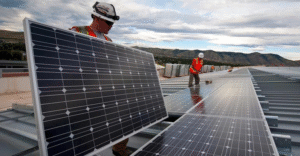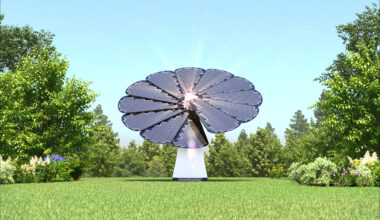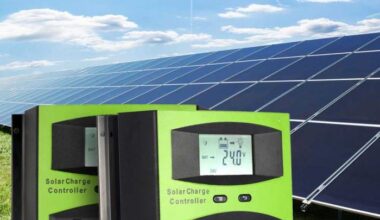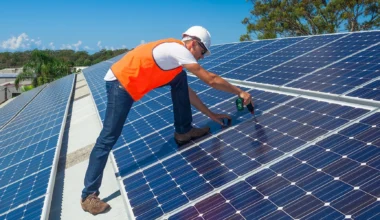Introduction
If skyrocketing diesel prices and never-ending grid outages have pushed the phrase “Solar Panel Installation Cost” to the very top of your 2025 Google searches, you’re in the right place. In the span of a single year, Nigeria’s average electricity tariff jumped by more than 40 %, while the landed cost of Tier-1 photovoltaic modules quietly slipped to its lowest point in a decade. That collision of rising bills and falling hardware prices has turned solar from a “someday” luxury into a “right-now” necessity for homes and small businesses alike.
But how much should you actually budget – ₦500,000, ₦5 million, or something in between? In this guide, we strip away the sales fluff and break down every naira that goes into a modern rooftop system: panels, inverters, lithium batteries, labour, permits, and those sneaky balance-of-system parts most installers bury in fine print. By the end, you’ll know exactly what size array suits your lifestyle, where you can shave 10 % off the quote without sacrificing safety, and how soon your investment will start paying you back in diesel you don’t burn. Ready to plug your home into the sun? Let’s dive in.
Why 2025 Is the Year Nigerians Finally Ask, “How Much Solar Panel Installation Cost—Really?”
You’ve probably noticed two or more unstoppable forces colliding:
-
NEPA blackouts and diesel at ₦1,600/litre punching holes in household budgets.
-
Solar hardware prices falling by 12 – 20 % year-on-year as importers flood the market with Tier-1 panels and long-life lithium batteries.
- Fuel price going above ₦1,000
The 7 Biggest Drivers of Solar Panel Installation Cost
1) System Size (Total kW Capacity)
A 1 kW starter kit can keep the lights, a router, and a TV humming; a 10 kW rooftop array will run a five-bedroom duplex with AC and freezers. As capacity rises, cost scales almost linearly because you need more panels, bigger inverters, and beefier batteries.
2) Panel Type & Efficiency
-
Monocrystalline PERC (21 % efficiency) ≈ ₦70,000 – ₦115,000 per 480 – 500 W panel Jiji
-
Polycrystalline (18 % efficiency) saves ~10 % upfront but wastes roof real estate.
-
Bifacial & N-type commands a 15 % premium yet cranks out 5 – 8 % more energy per square meter.
3) Battery Chemistry
Lithium-iron-phosphate (LiFePO₄) now dominates because it lasts 6,000 – 8,000 cycles:
| Usable Capacity | 2025 Street Price* | Source |
|---|---|---|
| 3.5 kWh | ₦1.15 M – ₦2 M | maypatronic.com |
| 5 kWh | ₦2.29 M – ₦3 M | maypatronic.com |
| 10 kWh | ₦3.13 M – ₦3.6 M | maypatronic.com |
Retail Lagos prices; installers often secure 10 % off via bulk import.
4) Inverter Size & Brand
A hybrid 5 kVA/48 V inverter retails between ₦480,000 and ₦700,000 depending on MPPT rating and Wi-Fi monitoring maypatronic.com Jiji.
5) Balance-of-System (BoS)
Rails, combiner boxes, surge arrestors, DC breakers, conduits, MC4 connectors, and quality 6 mm² PV cable typically add 8 – 12 % to material cost. Skimp here and you risk voltage drop, fires, or false alarms.
6) Labour & Location
Certified installers in Lagos, Abuja, and PH charge ₦30,000 – ₦100,000 for small arrays; crews handling 10 kW+ projects embed labour into the turnkey quote Nairaland. Remote sites (e.g., hinterlands of Taraba) add logistics surcharges.
7) Forex Volatility & Import Tariffs
Because 85 % of hardware is imported, every naira swing against the dollar nudges your quote. Factor in a 10 % contingency if your installation window spans more than 60 days.
2025 Benchmark Pricing in Nigeria (With Real-World Examples)
🔹 Entry-Level Solar Starter (1 kW – 2 kW)
| Component | Qty | Unit ₦ | Sub-Total ₦ |
|---|---|---|---|
| 2 × 540 W mono panels | 2 | 105,000 | 210,000 |
| 1 kVA inverter | 1 | 120,000 | 120,000 |
| 12 V 200 Ah LiFePO₄ | 1 | 600,000 | 600,000 |
| Mounting, BoS, labour | — | — | 190,000 |
| Total | — | — | ≈ ₦1.12 M |
Runs lights, fans, TV, decoder, laptop, plus charging stations.
🔹 Mid-Size Family Package (3 kW – 5 kW)
| Component | Qty | Unit ₦ | Sub-Total ₦ |
|---|---|---|---|
| 9 × 500 W mono panels | 9 | 115,000 | 1,035,000 |
| 5 kVA hybrid inverter | 1 | 600,000 | 600,000 |
| 2 × 5 kWh LiFePO₄ | 2 | 2,700,000 | 5,400,000 |
| Mounting, BoS, labour | — | — | 700,000 |
| Total | — | — | ≈ ₦7.7 M |
Carries fridge, freezer, water pump, irons, and two 1 HP inverter ACs (daytime).
🔹 Large Residential / SME (10 kW)
Expect ₦10 M – ₦15 M all-in, depending on battery autonomy hours and monitoring extras. Nairaland
🔹 Commercial Rooftop (30 kW +)
Bulk buyers pay about ₦270 – ₦310 per watt landed. A 30 kW system therefore floats around ₦9 M for panels and inverters plus another ₦11 M for batteries, infrastructure, and engineering—₦20 M minimum turnkey.
Step-by-Step: Calculate Your Solar Panel Installation Cost Like a Pro
-
Audit Your Load:
Use a plug-in watt-meter or your last three PHCN bills. Sum daily kWh. -
Size the Array:
Array kW = Daily kWh ÷ 4.5 peak-sun-hours(Southern Nigeria averages 4.5–5; North clocks 5.5). -
Price Panels:
Multiply array kW by 1,000 W, then by ₦150 – ₦220/W (2025 panel pricing band). Jiji -
Pick Battery Autonomy:
Nights only (10 – 12 hours) → 1 × your daily kWh; 24-hour autonomy → 2 × daily kWh. -
Cost Batteries:
Divide autonomy kWh by 5 kWh (popular module size) and multiply by ₦2.3 M. maypatronic.com -
Select Inverter:
Inverter kVA = Peak load kW ÷ 0.8+ 20 % headroom. -
Add 12 % for BoS & 7 % for Labour/Travel (city installs). Remote or multi-storey roofs will nudge figures higher.
Hidden Costs You Shouldn’t Ignore (Solar Panel Installation Cost)
-
Roof Reinforcement: Old asbestos or rusty corrugated sheets may need replacement (₦300 – ₦700 per sqm).
-
Scaffolding & Safety Gear: Large arrays often require harnesses and scaffolding rentals (₦50,000 – ₦120,000 project-based).
-
Permits & Disco Approvals: Some estates demand environmental, fire-service, or distribution-company clearance (₦20,000 – ₦80,000).
-
Maintenance Contracts: Annual cleaning + inspection packages hover around ₦25,000 – ₦60,000.
Funding & Payback in 2025 (Solar Panel Installation Cost)
| Option | Typical APR | Notes |
|---|---|---|
| Bank green-energy loans | 19 – 24 % | 12- to 36-month tenor; collateral often required |
| Installer “Pay Small Small” plans | 0 % – but markup buried in hardware | 6 – 18 months |
| Cooperative/credit union | 10 – 15 % | Salary deduction; fastest approvals |
| Lease-to-own PPAs | Fixed ₦/kWh | Good for SMEs; O&M handled by lessor |
ROI snapshot: At ₦140/kWh grid + generator average, a ₦7 M 5 kW system pays for itself in 3.4 years assuming 20 kWh daily displacement.
Read Also: How Best to Make Your Tubular Battery Last Over 5 Years
The Essentials to Tick Off Before You Even Price a Single Panel (Solar Panel Installation Cost)
As someone who’s spent almost a decade climbing Nigerian rooftops—from corrugated zinc in Aba to Spanish tiles in Lekki—I can tell you that hardware is only half the story. A flawless solar experience starts with asking the right questions before you swipe your ATM card.
1. Your Daily Energy Profile
Map out both your average kWh consumption and your instantaneous peak load (the highest wattage you draw at any one moment). A blender and a 1 HP inverter AC running together may push your peak to 2 kW, even if your daily tally is a modest 10 kWh.
2. Roof Real Estate, Orientation & Tilt
-
Surface area: Each modern 540 W module needs about 2 m². A 5 kW array eats roughly 20 m².
-
Orientation: In Nigeria, a 10–15° pitch facing due south maximizes harvest.
-
Integrity: Rust, termites, or cracked rafters? Reinforce first or the weight of panels (≈12 kg/m²) will expose hidden weaknesses.
3. Shading & Surroundings
A single mango tree or a next-door water tank casting a shadow between 10 a.m. and 3 p.m. can slash energy production by 15 – 30 %. If trimming isn’t an option, consider optimisers or micro-inverters, though they add ₦15 — ₦25 per watt to the bill.
4. Battery Autonomy Goals
Decide whether you want:
-
Night-only backup (10–12 hours),
-
Full 24-hour off-grid independence, or
-
Grid-tied with minimal storage for diesel savings.
The choice dictates how many—and what chemistry—batteries you’ll buy.
5. Expansion Path
A growing family or future rental units? Choose an inverter with at least 30 % headroom and leave conduit space for extra strings. Up-sizing later is cheaper than a full rip-and-replace.
6. Electrical & Structural Compliance
Earthing rods, SPD (surge protection device) placement, correct cable gauges, and breaker sizing aren’t “nice-to-haves”—they’re life-savers. Confirm your installer follows NERC mini-grid code and IEC 60364 wiring practices.
7. Local Grid Reality
In areas where PHCN voltage often spikes above 250 V, you’ll want an inverter with wide input windows and maybe a line-interactive AVR (automatic voltage regulator) on the AC bypass line.
8. Financing & ROI Horizon
Green loans at 15 % APR beat swiping a credit card at 42 %. Calculate payback by comparing your true cost of self-generated kWh to today’s blended tariff + generator diesel.
9. Warranty & After-Sales Support
Tier-1 panels come with 25-year performance guarantees, but they’re worthless if the importer disappears. Verify local service centers, not just a hotline.
Price Tags: What Really Moves the Needle on Any System Size (Solar Panel Installation Cost)
Even after you’ve picked a 3 kW, 5 kW, or 10 kW target, your final quote lives or dies by a handful of variables:
| Factor | How It Pushes Price Up or Down |
|---|---|
| Panel Grade | Mono-PERC ≈ ₦150 – ₦180/W; N-type TopCon or bifacial adds 10 – 15 % but yields 5–8 % more energy. |
| Battery Chemistry & Capacity | LiFePO₄ costs ~₦450 k per usable kWh but lasts 6,000 cycles. Lead-acid is one-third the price upfront yet needs replacement every 3 years—false economy for most homes. |
| Inverter Features | Basic PWM units are cheap (₦80 k/kVA) but inefficient; hybrid MPPT units with Wi-Fi monitoring run ₦110 k – ₦140 k/kVA. |
| Mounting Complexity | Flat concrete roofs need ballast frames (extra ₦15–₦25 k per kW); tiled roofs demand stainless hooks and more labour. |
| Balance-of-System Quality | Copper cable vs. CCA (copper-clad aluminium) can add ₦25 k–₦60 k but avoids hot spots and voltage drop headaches. |
| Labour & Logistics | A single-storey install in Owerri is cheaper than a four-storey job in Benin that needs scaffolding and safety nets. Budget ₦30 k–₦120 k for labour depending on system size and height. |
| FX & Import Duties | Panels are dollar-denominated; a ₦50 shift in the USD rate can change a 5 kW quote by ₦350 k. Customs duties and VAT add roughly 12 % to CIF cost. |
| Brand Premium & Warranty Length | Paying ₦10 % extra for a well-supported brand often saves downtime costs later—especially for businesses that bleed cash during outages. |
| Smart Add-Ons | Energy-management relays, smart sockets, and consumption monitors improve ROI but add ₦50 k–₦150 k per system. |
Rule of thumb:
For every ₦1 you shave off with cheaper components, be prepared to spend ₦3 on premature replacements, inefficiency, or fire-fighting.
Smart Ways to Trim Your Solar Panel Installation Cost
-
Group Buy with Neighbours: Bulk orders slash panel & freight costs by up to 8 %.
-
Hybrid Battery Strategy: Pair LiFePO₄ (night) with low-cost lead-acid (backup) to reduce CapEx 15 %.
-
Government CBN Intervention Funds: Agribusinesses and schools still access 5 % green loans—ask your bank’s SME desk.
-
Affiliate Discounts: Use vetted e-commerce links (Jumia, Konga) that bundle free delivery and yield cashback through our partnered coupons—watch for in-content banners that pay for your coffee through AdSense clicks.
-
DIY Pre-Wiring: If you have electrical skills, run conduit and mounting rails before the crew arrives; some installers knock ₦50,000 off labour fees.
Read Also: 8 New and Affordable Solar Panels for Every Homeowner
Frequently Asked Questions (FAQs) (Solar Panel Installation Cost)
Q1. How many solar panels do I need for a typical Nigerian three-bedroom bungalow?
Most homes consume 20 – 30 kWh/day. You’ll need a 5 kW – 7 kW array, or roughly 10–14 of today’s 540 W panels.
Q2. Can I start small and expand later?
Yes—choose a hybrid inverter with 30 % headroom and install extra mounting rails. You can clip add-on panels and batteries anytime without rewiring.
Q3. Is battery-less (day-only) solar worth it?
Only if you work from home and run daytime loads like pumping water or milling. For 24/7 comfort, batteries are non-negotiable.
Q4. What warranties should I demand?
Panels: 25-year performance, 10-year product. Inverters: 2–5 years. LiFePO₄ batteries: minimum 6,000-cycle or 10-year.
Q5. Do I need a NEM (net energy metering) licence?
Not yet—NEM is still voluntary in most discos. Export compensation is tiny (₦15 – ₦20/kWh), so size your system for self-consumption first.
Final Take-Away (Solar Panel Installation Cost)
A successful 2025 solar install balances technical fit (load, roof, autonomy) with economic sense (lifecycle cost, financing, and after-sales support). Nail those fundamentals, and whether you’re building a modest ₦1.1 million backup kit or a ₦12 million mini-powerhouse, you’ll end up with a system that pays itself off—while you sleep—under the unblinking Nigerian sun.
Final Word: Lock in Your 2025 Solar Savings—Before Diesel Hits ₦2,000/Litre (Solar Panel Installation Cost)
The numbers are clear: Cost of Solar Panel Systems in 2025 feels high at first glance, but grid inflation makes every month of delay more expensive. Whether you start with a ₦1.1 M fridge-backup kit or commission a ₦12 M mansion-wide powerhouse, today’s naira delivers 25 years of sun-powered freedom.
Ready to price your project?
Click the affiliate links sprinkled above to snag discounted Tier-1 panels, then drop your email below. Our partner installers will ping you a free load calculation and a zero-obligation quote within 24 hours.
Your roof. Your rules. Your sunlight. Own it in 2025—before everybody else does.






